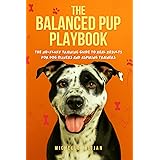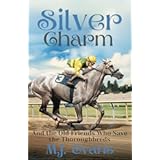The Foundation of Calm: Choice and Positive Reinforcement
The core of this exercise lies in allowing your puppy to make the “right” choice voluntarily, then generously rewarding that decision. Instead of luring or forcing, you create an environment where choosing the designated relaxation spot—like a dog bed or mat—becomes the most rewarding option available. This method harnesses your puppy’s natural curiosity and desire for positive outcomes.
A key technique highlighted in the video is the “jackpot” reward. When your puppy first lies down on the mat, they don’t just get one treat; they receive a continuous stream of delicious morsels, like ten kibbles or small pieces of cheese, for several seconds. This high-value reward makes an instant and memorable impression, telling your puppy, “This spot equals amazing things!” It accelerates their understanding and reinforces the desired behavior strongly.
The 11-week-old Border Collie, Texas 2104, provides an excellent example. Known for their high intelligence and boundless energy, Border Collies benefit immensely from training that engages their minds. By presenting the mat as a problem-solving opportunity rather than a command, Texas quickly learns that proximity to and presence on the mat yields fantastic rewards. This initial stage is all about making the mat the most exciting place to be, even for a wild puppy.
Setting Up for Success: Environmental Management
For this exercise to be effective, managing the training environment is paramount. A long line is an indispensable tool, as demonstrated by Carol. This allows you to control your puppy’s movement without physically dragging or forcing them. If your puppy tries to “boot it out of here” and find other distractions, the long line gently prevents them, ensuring they remain in the designated training area.
Furthermore, it’s vital to eliminate competing rewards in the environment. Ensure there are no tempting toys, other pets, or accessible forbidden items that could divert your puppy’s attention. The goal is to make the mat the *only* source of significant reward during the training session. This focused environment helps your puppy concentrate and quickly realize where the value lies.
Prepare your rewards in advance. Having your jackpot treats ready and easily accessible means you can reward the moment your puppy makes the correct choice. If your puppy has a habit of “self-rewarding” by grabbing treats off the floor, consider placing them on a small table or chair. Alternatively, enlisting a family member to hold the treats can be incredibly helpful, ensuring seamless and timely reinforcement.
Common Pitfalls and Troubleshooting Puppy Challenges
Even experienced trainers encounter challenges, and it’s essential to anticipate and address common issues when teaching your puppy to calm down. One frequent problem is the puppy deciding to explore or run around the house instead of engaging with the mat. The long line directly counters this, keeping them within the training zone without creating a negative association with the mat itself.
Another pitfall is offering the mat when you’re not ready to reward. If your puppy goes to the mat and nothing exciting happens, they quickly learn it’s a boring place. Always ensure you are prepared with your jackpot treats before the mat becomes available. The first few sessions, especially for a wild puppy, require quick reflexes to catch and reward the desired behavior immediately.
Also, understand that puppies, especially young ones, might “forget the game” between sessions. If your puppy struggles to remember, simply go back a stage. Re-establish the jackpot, shorten the duration, and make it clear that the mat is where all the good things happen. Patience and consistency are your most powerful tools; it may take two, three, four, or even five sessions for the concept to solidify.
Building Duration and Distance for Lasting Calm
Once your puppy reliably goes to the mat for a jackpot, the next step is to build duration—the length of time they stay there—and then distance—your ability to move away while they remain settled. Initially, reward every second or two that your puppy stays on the mat. Gradually, you can extend the time between rewards, perhaps waiting five seconds, then ten, before delivering a treat. This teaches your puppy that longer stays also lead to rewards.
Introducing Controlled Distractions
As your puppy becomes more comfortable, you can start introducing minor challenges, such as briefly showing a toy or making a soft noise. If your puppy chooses to ignore the distraction and stay on the mat, reward them generously. If they come off, the “game” simply ends, and the treats disappear. This teaches them that staying on the mat, even with temptations, is more rewarding than chasing the distraction.
Achieving Self-Control and Independence
The ultimate goal is to enable your puppy to choose calm relaxation even when you’re not directly supervising. This involves gradually increasing the distance between you and your puppy while they are on the mat. Start by taking a single step away, rewarding if they stay. Then two steps, then sitting in a nearby chair, always returning to reward their choice to remain settled. If your puppy gets up, simply remove the treats and gently guide them back to the mat to restart the process.
This process of teaching your puppy to calm down and settle on a mat is more than just an obedience exercise. It fosters incredible self-control and confidence. A puppy that can relax independently is less likely to engage in destructive behaviors, bark excessively, or experience separation anxiety. It allows them to develop the valuable skill of “switching off” their energy, becoming a calmer, happier companion. With consistent practice, you’ll soon find your high-energy puppy choosing to lie calmly for 15, 20 minutes, or even half an hour, giving you both peace of mind.









